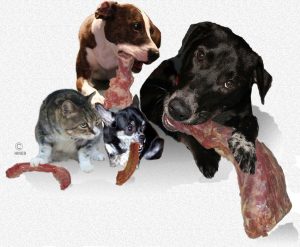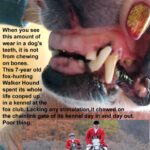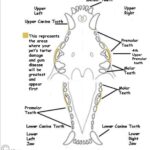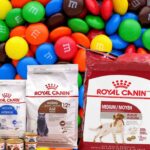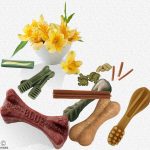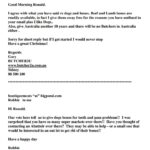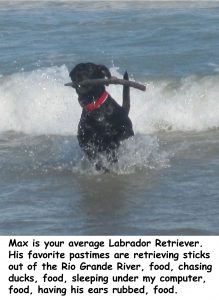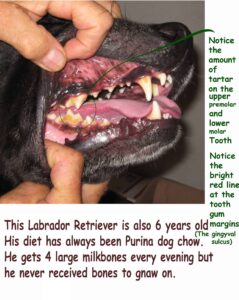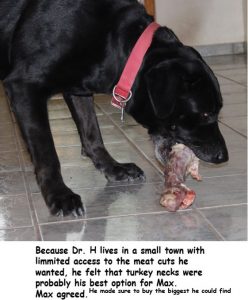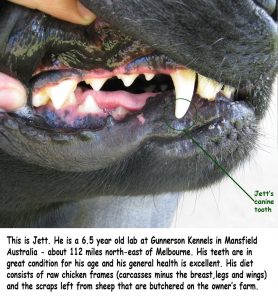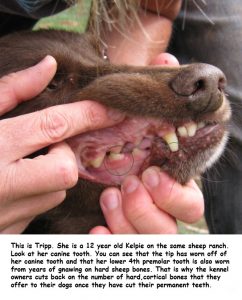Ron Hines DVM PhD
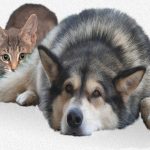


Tooth disease, actually disease of the gums that surround your pet’s teeth, is probably the most common health problem we veterinarians see in adult dogs and cats. Pets never complain; but gum disease and tartar are the cause of the strong breath you notice as your pet ages. In dogs in particular, it accounts for lost teeth, drooling and perhaps pain when chewing.
But another thing concerns me more. It is that periodontal disease (gum disease, gingivitis) puts your dog and cat’s total health in danger. And unlike a lot of the diseases I write about, it is something you can prevent at home without drugs or the assistance of veterinarians like myself. A friend of mine and a visionary Australian veterinarian, Dr. Tom Lonsdale, first made pet owners aware of the problem and its solutions. 
Cats suffer from mouth and dental disease too: In a colony of 109 pedigree cats kept by Royal Canin/Mars and fed their dry cat foods, 98% developed some degree of periodontal (gum) disease. They also developed jaw bone loss affecting their tooth sockets. (read here) Many of the pet health problems I write about are quite difficult to diagnose and treat; but this one takes no more than the “sniff test”
What Normally Prevents Tartar And Gum Disease?
Your pet’s diet texture is nature’s toothbrush. The dental tartar and the gum inflammation (periodontal disease) that always follow it are primarily due to the commercial diets (dry and canned) and the table food we feed them. That is why the wild and ancient ancestors of our cats and dogs did not suffer from this problem. They lived on a diet of raw meat, which they had to vigorously tear and gnaw from the bones of their prey. The dirt and grit that clung to the meat chunks as they fed, enhanced that tooth cleaning action. There have been many studies done on the teeth of wild carnivores – present and past. None report the bone loss or tartar that we see in our domestic carnivores (dogs, cats and ferrets). They do, however, confirm that the abrasion (rubbing) of raw flesh against teeth is what kept those wild animal’s teeth clean and their mouths’ health. When you confine these wild meat eaters to zoos and feed them only diced or ground meat products, they suffer the same gum and tooth disease that our dogs and cats do.
The plaque and tartar that accumulate, form heaviest in the areas where your pet’s tongue cannot reach – the cheek surface (buccal or lateral surface) of the pet’s large molar and canine teeth. You can view those areas of your pet’s mouth here:
The Culprits – Canned Diets, Commercial Pet Kibble, Too Many Kitchen Table Treats
Almost everyone agrees that pets that eat mostly canned pet foods and soft kitchen table treats develop periodontal disease early in their lives. Those types of soft diets leave too much residue in their mouths. That food residue allows abnormally high numbers of bacteria to take up residence in the pet’s mouth, and they begin the process of tartar buildup and gum inflammation. Pets that eat hard kibble develop this tartar and inflammation more slowly. Hard commercial dental treats, given to your pet on a regular basis, specialty dental diets and tooth brushing slow the process. (read here) But they do not eliminate it.
Two studies, commissioned by the Mars confectionery & pet food company, in an attempt to penetrate the Polish dog and cat food market, inadvertently confirmed that soft diets are unhealthy and that less tartar formed when their dry kibble was fed. But what neither of these “studies” attempts to do was to compare oral health on a fresh, wisely selected home-prepared diet with pets eating their prepackaged commercial pet foods. These paid-for “studies” are commissioned by all the large players in the dog and cat food industry. They are an integral part of these companies’ advertising campaigns. You can read those two here and here. (The Mars Conglomerate=M&Ms=Waltham Center=Royal Canin=VCA= Antech)
Your Dog Or Cat’s Age
Gum and tooth problems tend to increases with age in all of us. For a variety of reasons, our pets are living much longer than their wild ancestors did. So, a variety of aging-related changes such as reduced saliva production, age-related decreases in the power of your pet’s immune system and bone loss associated with neutering have had more time to develop. (read here and here) You can read what one astute Australian veterinarian had to say on the subject here and another by a British vet here.
What Is Actually Going On In My Pet’s Mouth?
Excessive Accumulation of Oral Bacteria And Their Toxic Products
As disgusting as it sounds, everyone’s mouth is teeming with bacteria. Our pets are no exception, having over 181 different types of bacterial inhabitants. (read here) Pets and their owners share many of the same oral bacterial and fungal organisms.
But just as on its skin surface and in its lower digestive tract, your dog and cat’s body has multiple ways to keep these bacteria in check. (read here) Oral bacteria have a natural tendency to cling to surfaces. If vigorous chewing and rubbing action does not occur, those bacteria accumulate on the teeth surfaces forming something called biofilms. Left to thicken, biofilms progress to a porous, soft plaque that later hardens into a solid, mineralized tartar. When this occurs, your pet’s natural protections breaks down because of the hiding spaces plaque and tartar afford these bacteria. The majority of the bacteria that live in these situations are those that flourish when there is little or no air (oxygen) present (=anaerobic bacteria).
Protected by tartar from the cleansing action of saliva, these bacteria produce products that inflame your pet’s gums. The mechanical irritation of tartar on the gum tissue surrounding your pet’s teeth make the problem even worse. The first inkling of a problem that you will notice, is a sharp red line at the point where your pet’ gums meet its teeth (the gingival sulcus or margin). That will be accompanied by a stronger breath. With time, the gum-to-tooth margin begins to recede – just like a receding hairline. That exposes portions of your pet’s tooth roots that are composed of more porous and softer (cementum) and nearly impossible to keep clean. By that point, your pet’s breath will be fierce.
Chronic Inflammation And Oral Bone loss Lead to Loose And Lost Teeth
Chronic inflammation and irritation affect the gums of dogs and cats in different ways. In some pets, the gums gradually recede surrounding all their teeth. The sides of their teeth adjacent to their cheeks are usually more affected than the sides adjacent to their tongue. In other pets, the gums both proliferate (reactive hyperplasia) and recede. In humans, that situation is called pyogenic granuloma. That Wikipedia entry is a bit misleading in that this is not a tumor or cancer. It is caused by the release of toxic and inflammatory compounds. Some of these compounds are released by oral bacteria. Others are released by your pet’s own white blood cells that flock to the area. The chronic inflammation and irritation of gum disease activates bone-destroying cells in your pet’s body called osteoclasts. With time, those cells are involved in exposing more and more tooth root and destroying the tissues that normally anchor your pet’s teeth into its jaws. Only on rare occasions does this progress to pre-cancerous states (e.g. giant cell granulomas, ossifying fibromas). Progression to true oral cancer is even rarer. In other occasions in dogs, only moderate amounts of tartar and bacteria lead to fibrous cauliflower-like tissue masses surrounding the base of the pet’s teeth called epulis.
What Are The Effects Of Gum Disease On The Rest OF My Pet’s Body?
Veterinarians and human dentists will tell you that gum disease and tartar left untreated can lead to a variety of other health problems. But the truth is that although it is obvious that pets and people with oral issues often have other general health issues, we have not found good ways to prove which is causing which. In humans, for example, folks on dialysis due to kidney disease have more than their share of periodontal disease. But physicians cannot decide if bacterial toxins from periodontal bacteria injure kidneys or if, instead, blood toxins associated with failing kidneys cause the periodontal disease. The same tooth-to-heart relationship has been found in human valvular heart disease and its counterpart, mitral valve disease in dogs. Groups that believe that periodontal disease is the root of general human health issues point out that marker chemicals of generalized inflammation (C-reactive proteins) are present in the blood of humans and pets with periodontal disease even before heart or kidney problems occur. In humans, gum disease and diabetes also often occur together, so there were suspicions that the first might influence the second. Veterinarians have also made that association, indicating that gum disease could be one of the causes of diabetes in pets. (read here) That may or may not be the case (read here) Nevertheless, there is no doubt that your pet’s body is negatively effected when it must deal with the chronic infection that periodontal disease imposes. (read here)
Why Do Some Veterinarians And Almost All Veterinary Dentists Advise Against Giving Your Pet Wisely Selected Bones To Keep Your Pet’s Teeth Clean?
stopped
Veterinarians tend to be risk-adverse. We advise against the things that we were taught in school were dangerous, and we advise against things that we have seen cause problems in the past. All of us were warned by our clinical instructors of the dangers of feeding bones and all of us have encountered pets ill with inappropriate things they have swallowed. In those cases, cause and effect were obvious: the dog knocked over the trash can, wolfed down the barbecued ribs or Colonel Sanders leftovers wrapper-and-all and showed up at our clinic the following morning. It is similar to a water accident – they occur. But to prevent a water accident from ever happening, would you deny your child access to the beach and swimming pool? If you did, you could rest assured that your child would not drown. Similarly, the end results of denying dogs and cats suitable natural objects to chew on prevents any of them from ever experiencing an immediate ingestion accident. The negative effect of that choice take years to develop. When those dental and mouth problems finally do become apparent in your dog and cat, cause and effect are separated and much harder to recognize. The bill for not providing suitable chew items can be a clinic waiting room full of more subtlety ill pets suffering from a wide variety of health problems. Like any buy-now-pay-later scheme, the bill is a long time in coming and in most of those cases, cause and effect are never recognized. Besides, the veterinary industry of today is dominated by the same powerful interests that warn against natural home-prepared diets. To admit any truth in one would weaken their arguments against the other.
Well, Can’t My Veterinarian Just Clean My Pet’s Teeth Whenever It Needs It?
Yes, your veterinarian can do that.
However, very few things in medicine have no risk. The most obvious risks are the risks of general anesthesia. Things can get hectic in a veterinary hospital and “situation awareness” fluctuates in all of health care. (read here) Serious internal diseases are not always apparent in pre-anesthetic blood screens of pets and general anesthesia always poses some degree of risk. That risk increases as your dog ages. Most anesthesia deaths occur because of unanticipated circulatory collapse, unrecognized physical factors or in association with anesthetic administration. The standard pre-op tests (AP, BUN, creatinine, GGT, glucose, total protein and CBC) do not focused on those unanticipated causes.
When your pet’s gums have receded significantly, improvements from dental treatment tend to be quite fleeting (temporary). If performed early and followed up by daily tooth brushing, and diet changes, improvements can last longer.
Almost all veterinarians use some form of sonic scalers to loosen tartar. Those machines are capable of damaging tooth surfaces – particularly when they are used at too high a setting or by inexperienced assistants. Root planing to encourage gum re-growth is also not without risk. (read here)
My belief is that if professional dental treatment for your dog or cat needs to be performed more frequently than every year, your pet would be much better off if the affected teeth were extracted. If your pet’s white blood cell count, immunoglobulin and C-reactive protein levels do not return to normal and stay there for a reasonable period of time, multiple extractions are a much healthier option than preserving teeth. You might be resistant to that notion and a veterinary dental specialist would probably be too. But dogs only chew long enough to shear food into chunk sizes they can swallow. They do just fine without most of their teeth. They are not vain creatures like us, and they do not pause to admire themselves in the mirror.
Hand held tooth scaling done by groomers will lessen breath odor for a while, but the effects are primarily cosmetic. The hand-held scalers used can also injure exposed tooth roots if they are used too vigorously. Besides, State Veterinary Boards have made the procedure illegal in most of America when performed commercially without a veterinarians’ supervision. No mater who does the procedure or what apparatus is used, the mechanical forces that need to be applied can be enough to allow bacteria to scatter throughout the body. (read here) That said, advanced periodontal disease cannot be cured or treated with wisely chosen bones. Although no studies I know of exist, those pets might actually be at a much higher risk of accidentally swallowing undesirably large portions. Having your local veterinarian remove the affected teeth is the only way to end the problem permanently. After your vet’s extractions, a safe option for your pet are products like Greenies:
How Is It That Dogs And Cats Can Digest Bone and Cartilage When You And I Can’t?
Dogs and cats, being by nature carnivores, are better engineered by the Creator to digest both cartilage and bone than we are. Their upper digestive tract contains higher amounts of one of the enzymes that digest cartilage, hyaluronidase (read here) and possibly other cartilage and bone dissolving enzymes such as pepsin. (read here) What cartilage that passes farther down their tracts is broken down through fermentation (read here) Bone dissolves slowly in acid. The acidity of your dog and cat’s stomach isn’t much different than yours when both your stomachs are empty. But after a meal, the acidity of your pet’s stomach increases (lower pH) more than yours (read here) and it stays that way longer. (read here) So bony and gristly items are best given shortly after your pet’s meal. Your pet is also less likely to gulp things down whole after a meal. People who successfully give their dogs the cortical weight-bearing bones that I caution you about, usually give them as “raw meaty bones”. They tell me that by the time the dogs finish tearing off the abundant meat, they are less inclined to attempt to consume the remaining bones.
Can Any Dog Or Cat Handle Any Bone?
Most certainly not.
Dogs and cats are not hyenas. Hyenas are bone crackers, dogs are tearers, rippers and shearers like wolves. The cat family is even less likely to chew. That is why I never suggest that the stripped support bones of grazing animals like cows and sheep or other livestock like pigs be given to dogs or cats to chew on (although others have found that sawn autoclaved portions are acceptable. (read here) But there are plenty of bones that are appropriate to give your pet. These are the bones that contain no ham bone-like marrow cavity. They are called cancelous bones and their job is to produce the cells later found in the blood. Cortical bone is the structural supportive bone of the body (hydroxyapatite). In mature livestock, it is strong enough to crack your pet’s teeth. Even if that does not occur, through years of gnawing at them, they produce too much wear on your pet’s teeth. The vertebrae of the spine are primarily cancelous bone. The safest ones for your pet are from commercial poultry or very young livestock. Poultry are slaughtered in the USA at an extremely young ages (6-8 wks for chickens, turkeys 14-18 wks). A critical point is to never offer your pet a bone that it could conceivable swallow whole or offer bones to them when they are excessively hungry. That defeats the purpose of bones as dental aids, and it introduces a number of potential dangers (although most will dissolve in your pet’s stomach in any case). Select bones with considerable meat attached. Do not offer bones with sharp, sawn angles. It is very wise to supervise your dog for a number of months while it is gnawing on bones – until you feel confident your pet knows how to use them properly. If you are starting out with a pet that is “food protective”, you need to consider in advance how you will take chewing objects away if you have to.
Turkey And Chicken Necks
These are our dog, Maxx and our cat, Oreo’s, favorites. Cat and small dogs do best with chicken necks – fed as they come – skin, bone fat and the minimal meat they contain. Larger dogs benefit more from larger turkey necks. As I mentioned earlier, poultry in the US is slaughtered before neck bones and frames become highly calcified. Poultry necks are approximately 18% protein, so they provide a great deal of nutrition as well. (If your pet gains weight, cut back calories elsewhere.) However, poultry necks are probably an unsuitable major source of your pet’s nutrition. Veterinary nutritionists try to keep your pet’s total dietary calcium to phosphorus intake at about 1.5 parts calcium to 1 part phosphorus (1.5:1). A diet of poultry necks would be closer to 2.4:1. Again, supervise your pets closely until you know how they react to these new food items – there will always be a few pets that try to gulp them down – particularly if they are quite hungry. Once in the stomach, they dissolve.
Underside Ribs (short plate)
Appropriately sized ribs – cut from the underside of veal calves and lamb (nearest to their breastbone or sternum) that is mostly cartilage, are also excellent. But as livestock mature, their bones become thick and strong and more problematic when offered to pets. These gristly cuts can be hard to locate if you do not belong to a pet meat coop or live in a large metropolitan area with specialty butchers. Although I live in the heart of the cattle country of South Texas so dear to Hollywood, they are now nearly impossible to find here. That is because all our meat processors have all moved to Houston and Dallas and the low value of the cuts I mention do not justify the expense of long-distance transportation and refrigeration. Even in Australia with its extraordinarily high meat consumption and superior common sense, underside ribs and turkey frames are getting more and more difficult to find. see here
Chicken And Turkey Backs and “Frames”
The boned-out carcasses and backs of chickens and turkeys (frames) are also excellent for the oral health of pets. But they can also be a challenge to locate in the United States. Mayor American processors, like Tyson, Pilgrim’s and Sanderson Farms send this waste product directly to rendering plants adjacent to their facilities to be turned into poultry by-product meal. Then that product is purchased by the big pet food conglomerates. In my area chicken feet (paws) are still available. Once considered garbage, they are now more expensive than chicken breast. Poultry producers now keep a close watch on their chicken’s valuable feet. (read here) Paws (with the “finger nails” removed) are too small to help the gums of large dogs, but they are excellent for toy breeds and cats.
Beef Tracheas, Tendons and Ligaments
Although these products are cartilage, not bone, they are excellent for keeping the gums and teeth of large dogs healthy. Once they have been dried, processed or smoked, they are considerably less effective at doing that and more problematic when it comes to sanitation and health (smoke residues contain phenols and formaldehyde). If you offer tracheas (windpipes) or gullets consistently to your pet, be sure that the thyroid glands are not attached. (read here) Smaller pets will have to have these parts cut into suitably sized strips with poultry shears. Cut them only small enough so that they do not intimidate your pet – the bigger to chew on, the better.
Cow Noses, ears, snouts, etc.
All these livestock parts are good candidates because they are primarily gristle (collagen) that contains no bone. In the Southwest, Hispanic markets often stock them for “cachete”=cheeks. On the West and East Coasts, try an Asian market.
Oxtails
Years ago at the NIH, I fed a colony of 35 geriatric beagle dogs oxtails once a week to help keep their teeth clean. These were retired breeder dog that I had inherited that lived out their lives in kennels on the institute’s gravel roof. I recall that one did get a section of ox tail lodge between its upper molar teeth. I pried it out with my fingers easily. But many dog owners feed oxtails successfully. They are not sold in the area where I now live – perhaps they are in yours. Oxtails are too large for smaller pets.
Find Yourself A Mentor
You are always safest at anything when you begin as an apprentice. Find someone in your area with experience in feeding these items to their dog or cat. They will know local food sources you can trust and are almost always quite willing to give you the moral support needed when taking on a new unfamiliar challenge.
What About Cooked Bones?
The rigidity (stiffness) of bone is due to its calcium content. But that calcium (calcium phosphate and calcium carbonate) form around a scaffolding of collagen protein. Cooking liquefies that collagen, turning it into gelatin. So, well cooked cortical bones are considerably weaker than raw ones. Perhaps that might make them splinter more easily if they are not cooked past that point. If you go that rout, I would pressure-cook them until they crumble without much force. Beef ribs reach that consistency when cooked in a one-gallon pressure cooker with two cups of apple cider vinegar for 2 and one-half hours. The broth will jell and is rich in glycosaminoglycan similar to what is found in glucosamine supplements such as Cosequin®.
Can Some Dogs And Cats Handle Bones Better Than Others?
Yes,
The pets that handle bones best are the ones that grew up knowing what to do with them. Kittens and puppies, offered meaty bones, instinctively learn to grasp them in their teeth while pushing away with their paws to tear off the meat. When offered to your pet when it is young, challenging food items like gristly meat and poultry necks actual alter the dimensions of your pet’s jaws as it matures. (read here) The older your pet is when it is introduced to bones, the more variable its behavior might be and the more initial supervision that it will require. Old pets, with advanced tooth and gum disease, are more likely to gulp down whatever you feed them – poor things. Sometimes, offering them softer meat treats still frozen is the best option for them.
Do Tartar And Gum Disease Cause a Unique Problem For Cats?
Yes.
Cats of the present and the past have different innate (natural) feeding habits than dogs. It is not that your cat is just smaller than most dogs, research in feline history indicates that all of the cat family, wild and domestic (with the exception of lions), gnaw and chew their prey less than wild and domestic canines. (read here) Cats are also more apt than canines to disregard bones that cannot be easily swallowed. (read here) Have patience with your cat. Do not be tempted to chop chicken necks or similar items into small pieces as that defeats their purpose. Try chicken feet as well. You can also purchase Cornish game hens, and feed all but the leg and wing bones.
Odontoclastic Resorptive Lesions Of Cats
When cats are primarily fed a soft diet and kibble, their mouth sometimes responds differently than dogs. The tartar accumulation in those cats is generally less than in dogs, so their breath is rarely as fierce. Their gums recede with the same telltale red ring surrounding their tooth sockets, but unlike dogs, cavities actually form in their teeth. In some cats I have examined, the teeth appear to dissolve – much like a sugar cube in a cup of hot tea or an iceberg in warm seas. Cats with a pampered indoor life seem considerably more at risk for this problem. I see the problem most frequently in Siamese cats. Some suspect genetics might play a part. Read more about this dental problem in cats here and here. My suspicion is that characteristics of these cat’s saliva and/or corrosive substances liberated from oral bacteria are involved. But as in humans, the dynamics of tooth resorption is not understood. (read here)
Are Some Pet Breeds More Susceptible to Gum And Tooth Disease Than Others?
Yes
All other things being equal, the more the shape of your dog or cat’s mouth differs from its “wild” shape, the more likely tartar is to accumulate. The shape of a dog’s head is divided into three types, the original mesaticephalic shape, the lengthen dolichocephalic shape, and the shortened brachycephalic shape. The more a pet’s facial structure deviates from mesaticephalic (wolf-like), the less efficient the biting force of its facial muscles and the more likely it is that food residue will lodge in the mouth.
Toy dog breeds seem particularly prone to gum disease. In the case of these smaller breeds with relatively normal facial structure (like Maltese) it is unclear if the pets are more prone to gum disease or just more likely to be spoiled and doted over by their owners.
Purebred cats, particularly those with Siamese heritage (Those are the breeds with abnormally wedge-shaped heads) seem to have more dental problems than common random bred cats.
What A month of Gnawing On Wisely Chosen Bones Can Do:
What Are The Risks Of Feeding My Dog Or Cat Bones?
There are two important ones, fractured teeth and intestinal damage or obstruction. Both can be avoided by choosing bones wisely and only offering those that fit your pet’s size and temperament.
It will always remain true that some dogs will obstruct on inappropriate bones and a few, (perhaps 6%) will damage their teeth. But I believe that considerably more pets will eventually become ill indirectly from chronic periodontal inflammation. In 82 dogs examined for intestinal obstruction at the Cornell veterinary clinic, obstruction was due to cloth, plastic bags, toy balls, shoe strings, grass, and dental floss – none to eating bones. (I keep a goldfish bowl full of all these curious items I have retrieved) But certainly, a pet with a history of gulping odd things ought not be given bones that might be gulped as well. The same thing goes for pets that suffer from separation anxiety.
The teeth of all carnivores are kept clean by the same forces that cause wear (microabrasion). If those gnawing forces occur too often or too forcefully, your pet’s teeth will wear excessively. Leg bone is the worst offender but the amount of non-poultry bone your pet eats should be no more than the amount required to keep its teeth clean and its breath fresh. Too many bones (or the wrong ones) can also constipate your pet and/or cause anal and rectal irritation.
Heavy bones from livestock can also crack teeth – particularly the 4th upper premolar tooth that takes the brunt of crushing pressure. There will always be some risk of that if you feed robust bones to your pet. From what I know about free-ranging coyotes and wolves, 4-7% damage at least one tooth over their lifespan from gnawing on heavy bones. That is why I hesitate to give those types of bones to my dogs. But wild carnivores were forced by necessity to consume those less desirable parts of carcasses. Your pet is well-fed, so it is much less likely to do so.
Salmonella and Other Bacteria
That risk is quite minimal if your source of bone is from a USDA-inspected source that went through human food-standard supply chains. Go to a companion article here, to read more about salmonella risk.
Are There Alternatives To Raw Bones That Are Just As Effective In Keeping My Pet’s Teeth and Gums Healthy?
Hide
Both dried rawhide and fresh hide are effective in keeping your pet’s teeth clean. They are not nearly as effective as more abrasive chewing objects like turkey and chicken necks and frames, but they are quite helpful. My primary concern is the quality of the hide objects you purchase. Where laborers work for low wages assembling chews, slaughterhouse supervision and sanitation is poor or nonexistent. So, there is considerable variation in the texture, quality and contamination of commercially sold rawhide chews sold in the United States. A Russian roulette. Your pet is considerably safer receiving fresh hide and offal from cattle that passed USDA inspection – if you can find such a product.
Tough, Abrasive Cuts Of Meat
Tough portions of meat are, in themselves, cleaning as dogs rip and tear through them. In wild carnivores, most of their teeth cleaning occurs that way. The meat they eat drags along the ground, accumulating a lot of abrasive grit that rubs against their teeth during their lifetimes and keeps their teeth clean. The meat you feed your pet is not completely free of grit either if you offer it out of doors. Once you give it to your dog to chew on, it also accumulates fine grit. Mineral grit is everywhere, as surprising as it may seem, the sources in your home and yard include the Sahara and Gobi deserts (read here & here)
The toughest cuts of red meat are the least expensive ones, those obtained from the lower legs and neck of livestock. To make them more acceptable for human consumption they are usually sold in thin cross-sections that defeat the cleaning action our pets need. (beware of those that have been pre-injected or marinated in softening or flavor-enhancing products) For longer strips, try Vietnamese and Korean markets if any exist near you. Shank meat is probably the best – but short plate – particularly if it includes the cartilaginous portions of the ribs – is excellent too. Snoop around to be sure their sources are sanitary.
Are There Other, Non-dental Benefits Of Offering Your Pet Bones?
Yes
A more contented, happier, relaxed and occupied pet
You are on the Vetspace animal health website
Visiting the products that you see displayed on this website help pay the cost of keeping these articles on the Internet.

